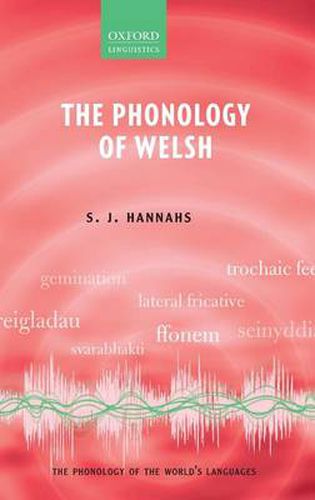Readings Newsletter
Become a Readings Member to make your shopping experience even easier.
Sign in or sign up for free!
You’re not far away from qualifying for FREE standard shipping within Australia
You’ve qualified for FREE standard shipping within Australia
The cart is loading…






This book is an up-to-date, comprehensive, and theoretically coherent account of the phonology of modern Welsh. It begins by describing the history of Welsh, its relation to the other Celtic languages and its phonetic inventory. Six chapters then explore the structures underlying its sound system. The first considers the phonetic background, including segment inventories and the characteristics of the main dialects. The second examines phonological structures including syllables, feet, phonotactics, and stress. The third and fourth analyse phonological alternations in the language, such as vowel mutation and assimilation, and foot-based phenomena such as the behaviour of /h/ and antepenultimate deletion. The fifth examines the phonological representation of initial consonant mutation, one of the best known and least understood characteristics of Celtic phonology in which the initial consonant of a word undergoes a systematic alternation with a consonant that is phonetically different. The concluding chapter summarizes the work’s major points and arguments and highlights opportunities for research. S. J. Hannahs approaches the subject from the perspective of generative phonological theory. He couches specific analyses in the constraint-based framework of optimality theory but presents data in as theory-neutral a way as possible to ensure its accessibility to linguists of all theoretical persuasions.
$9.00 standard shipping within Australia
FREE standard shipping within Australia for orders over $100.00
Express & International shipping calculated at checkout
This book is an up-to-date, comprehensive, and theoretically coherent account of the phonology of modern Welsh. It begins by describing the history of Welsh, its relation to the other Celtic languages and its phonetic inventory. Six chapters then explore the structures underlying its sound system. The first considers the phonetic background, including segment inventories and the characteristics of the main dialects. The second examines phonological structures including syllables, feet, phonotactics, and stress. The third and fourth analyse phonological alternations in the language, such as vowel mutation and assimilation, and foot-based phenomena such as the behaviour of /h/ and antepenultimate deletion. The fifth examines the phonological representation of initial consonant mutation, one of the best known and least understood characteristics of Celtic phonology in which the initial consonant of a word undergoes a systematic alternation with a consonant that is phonetically different. The concluding chapter summarizes the work’s major points and arguments and highlights opportunities for research. S. J. Hannahs approaches the subject from the perspective of generative phonological theory. He couches specific analyses in the constraint-based framework of optimality theory but presents data in as theory-neutral a way as possible to ensure its accessibility to linguists of all theoretical persuasions.